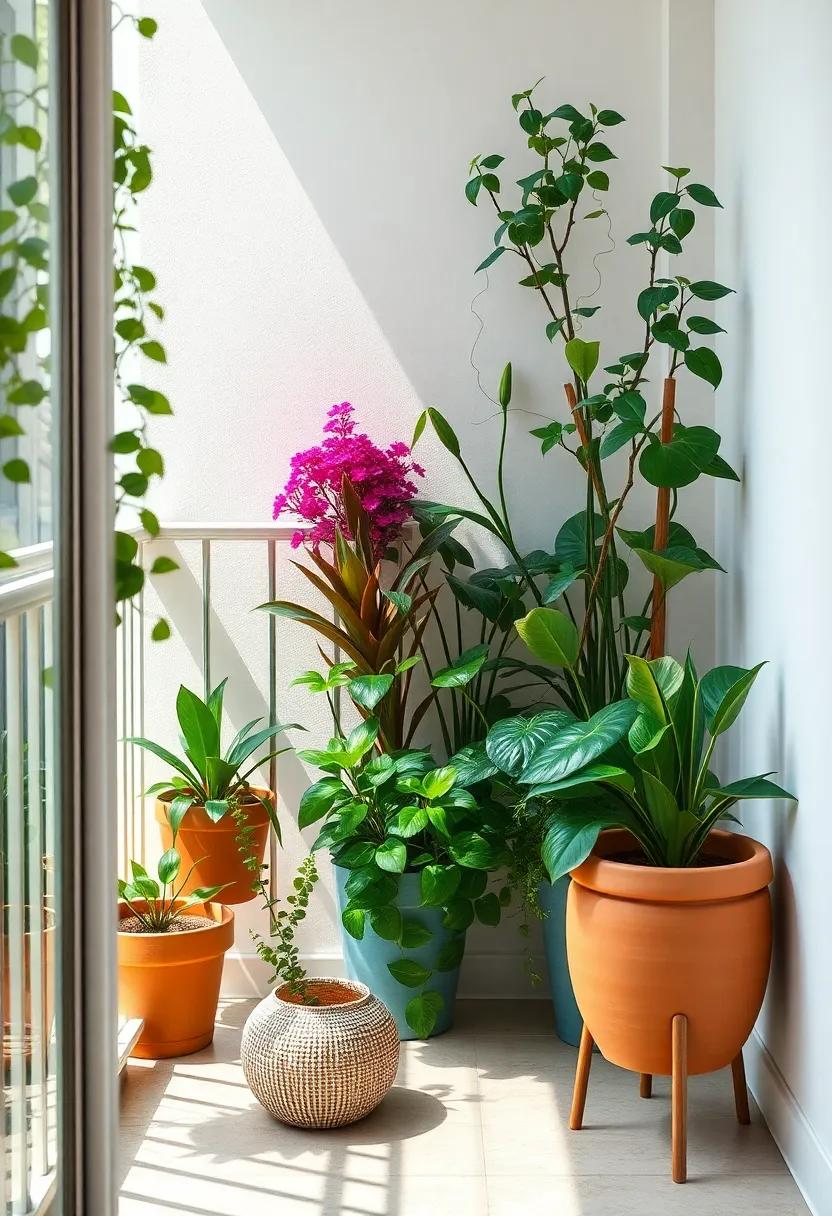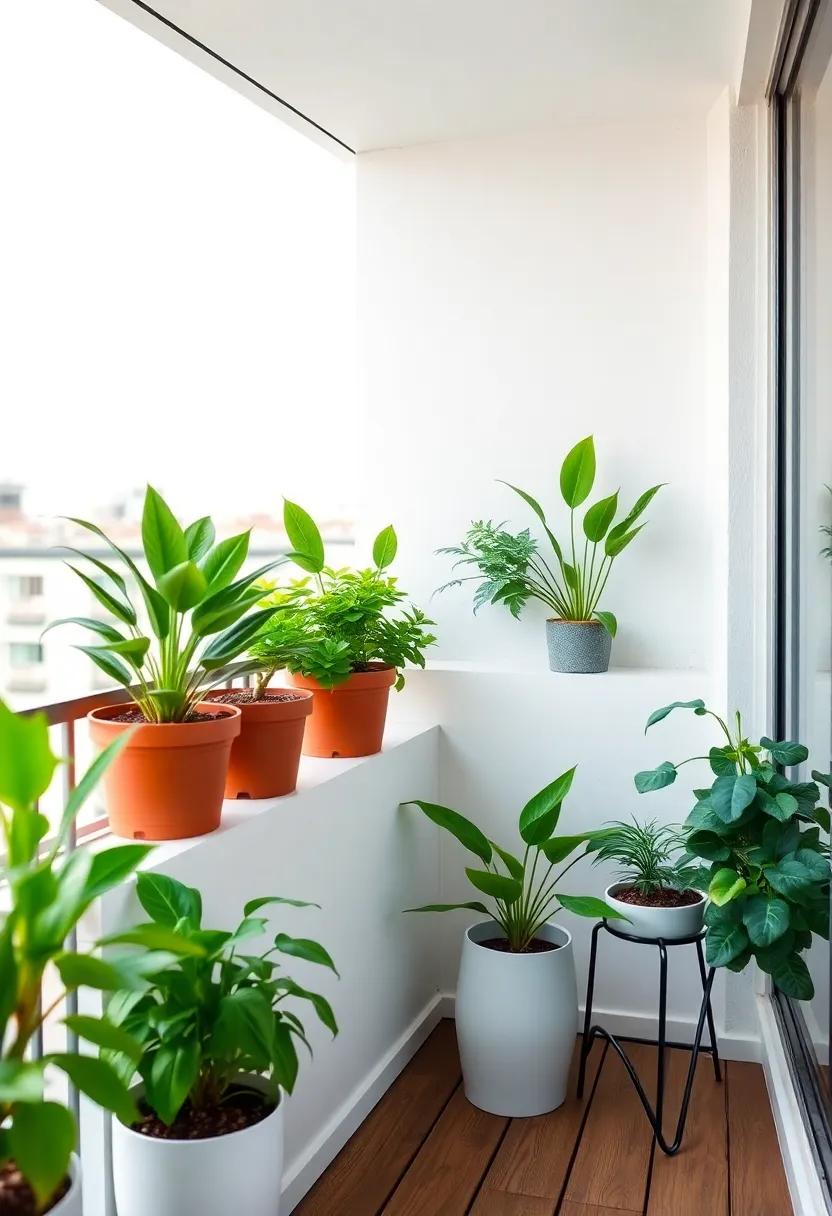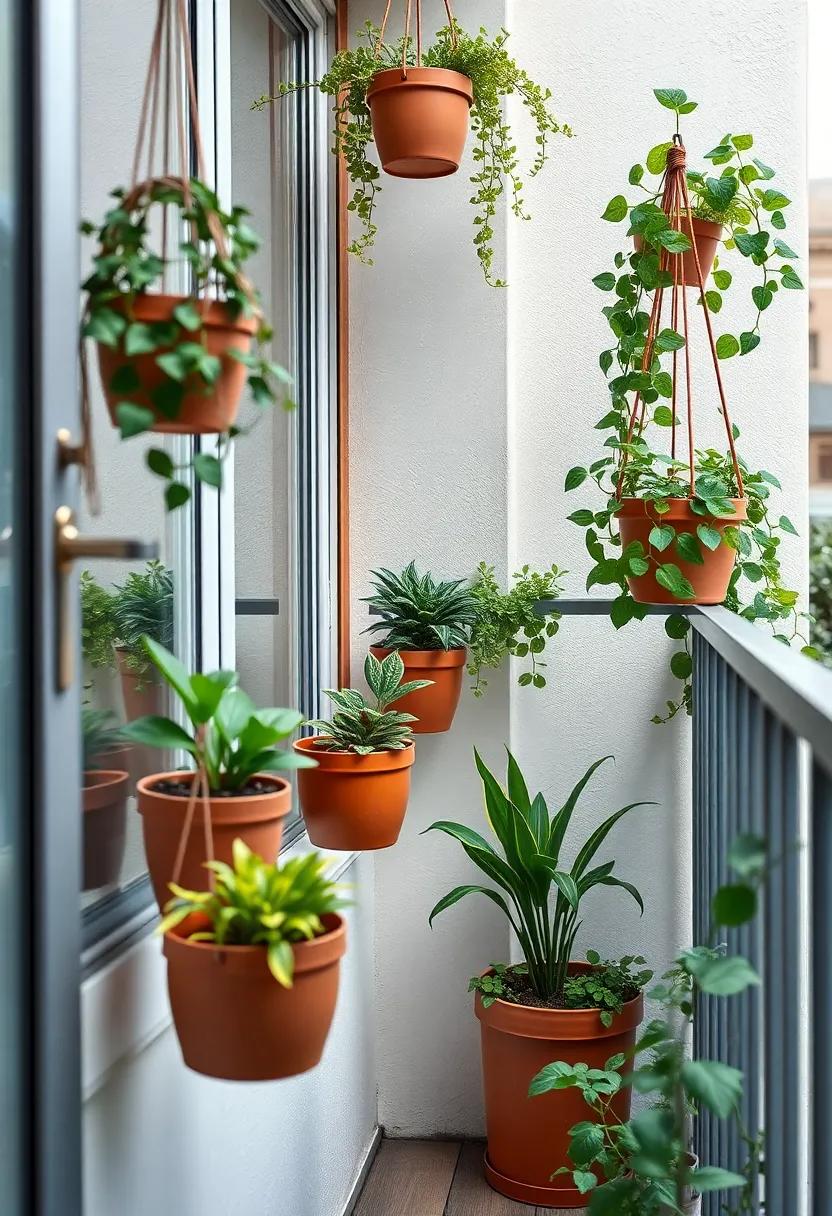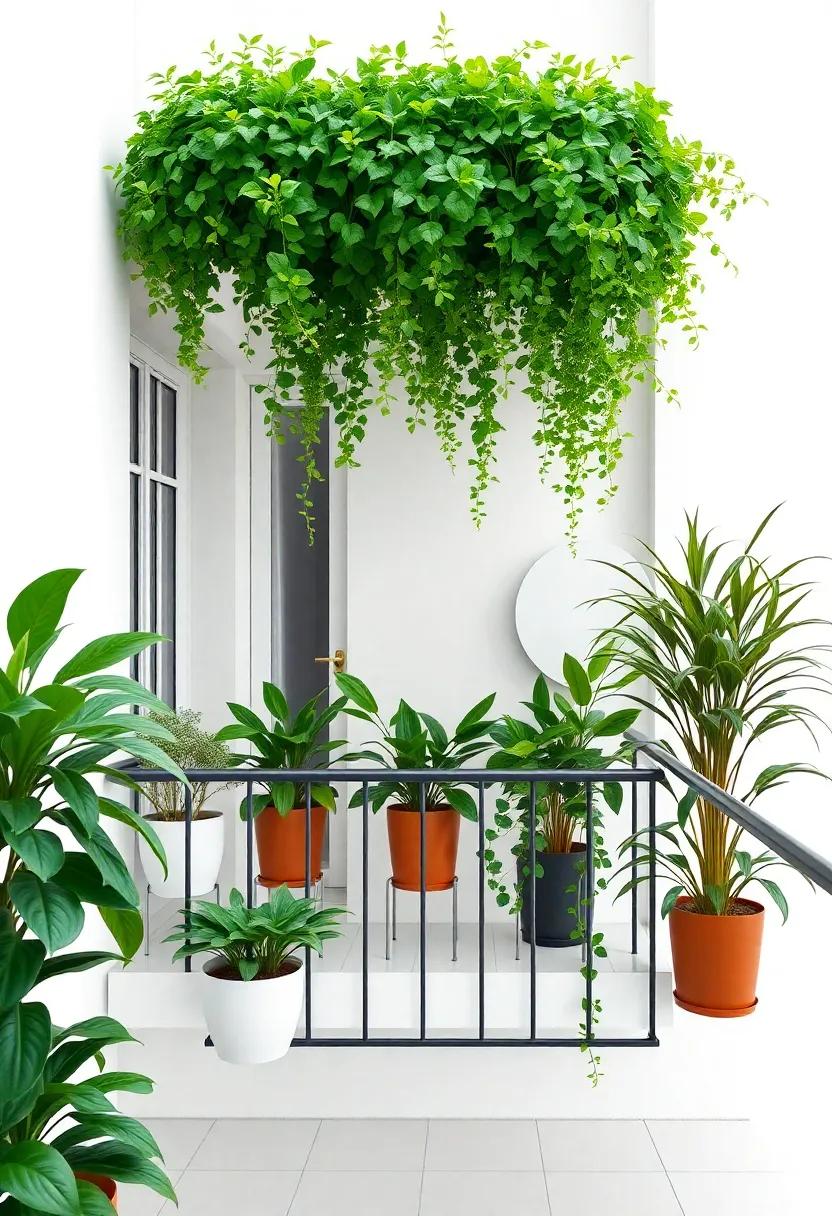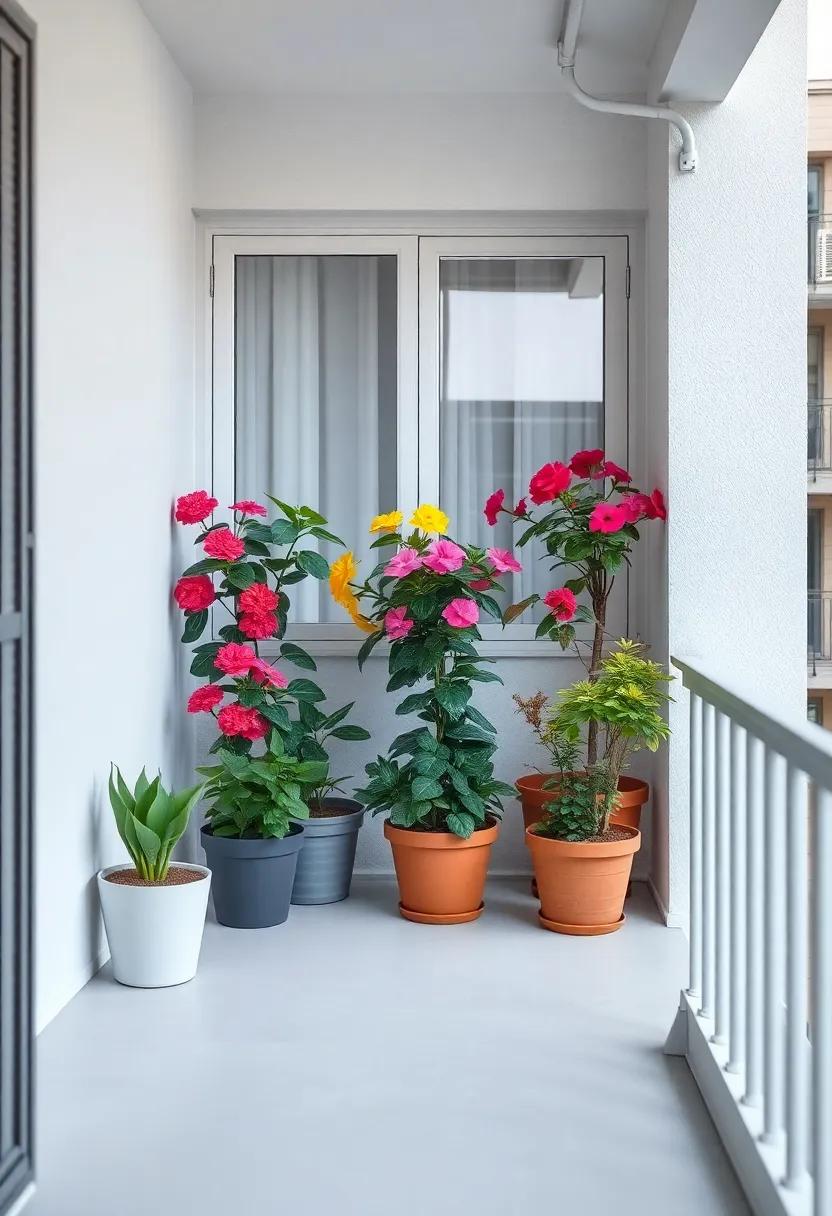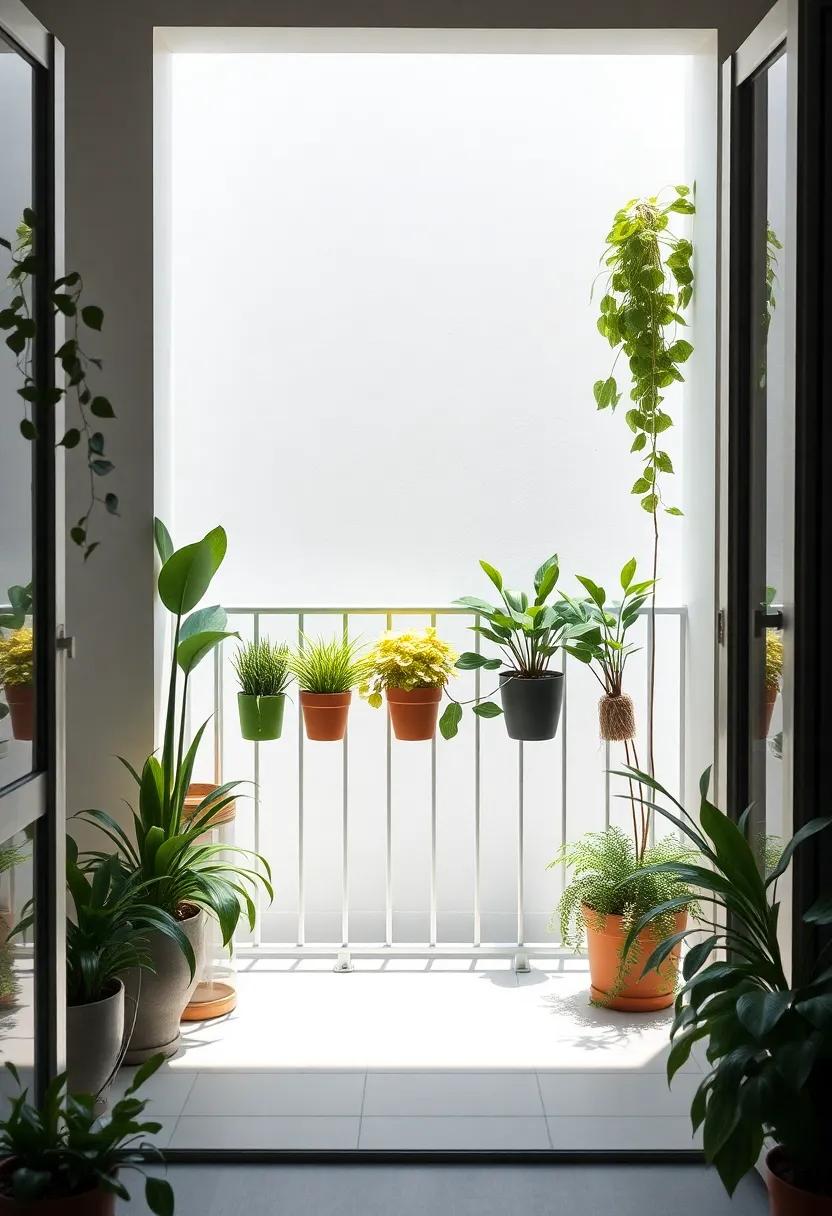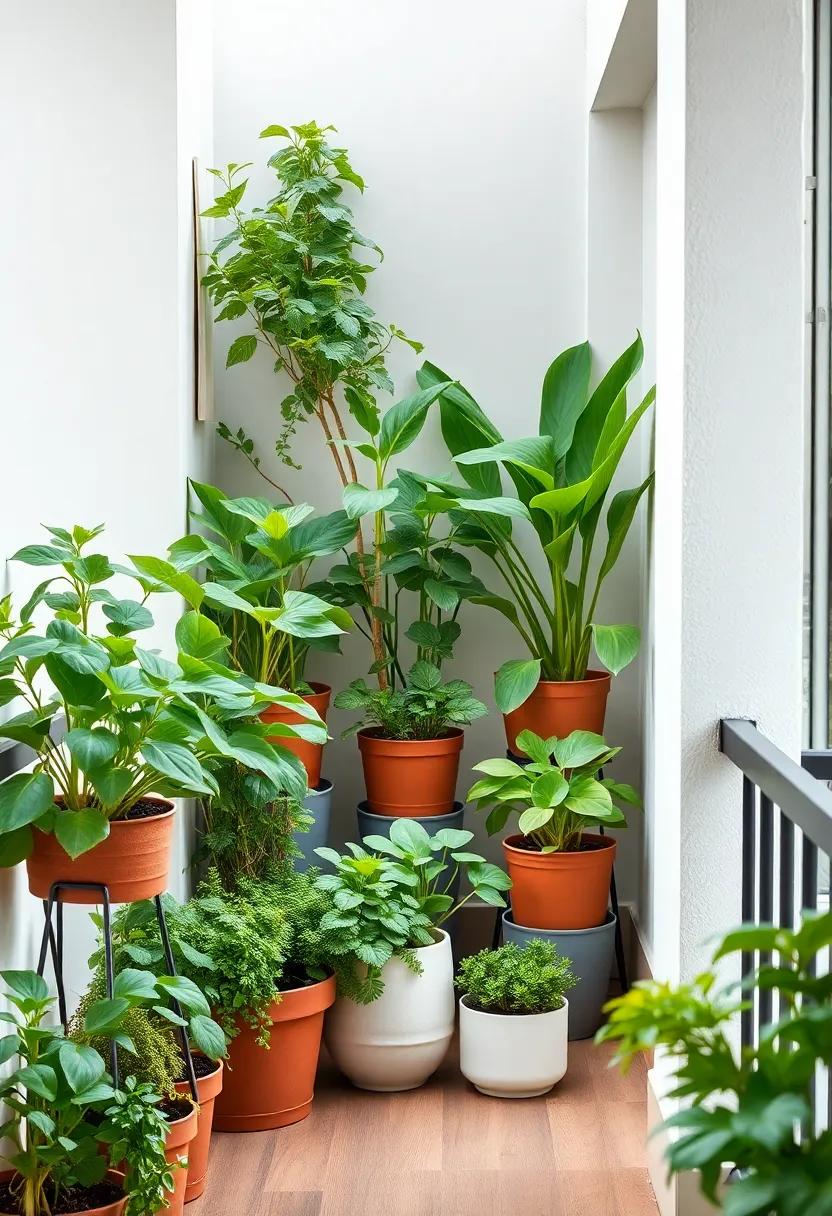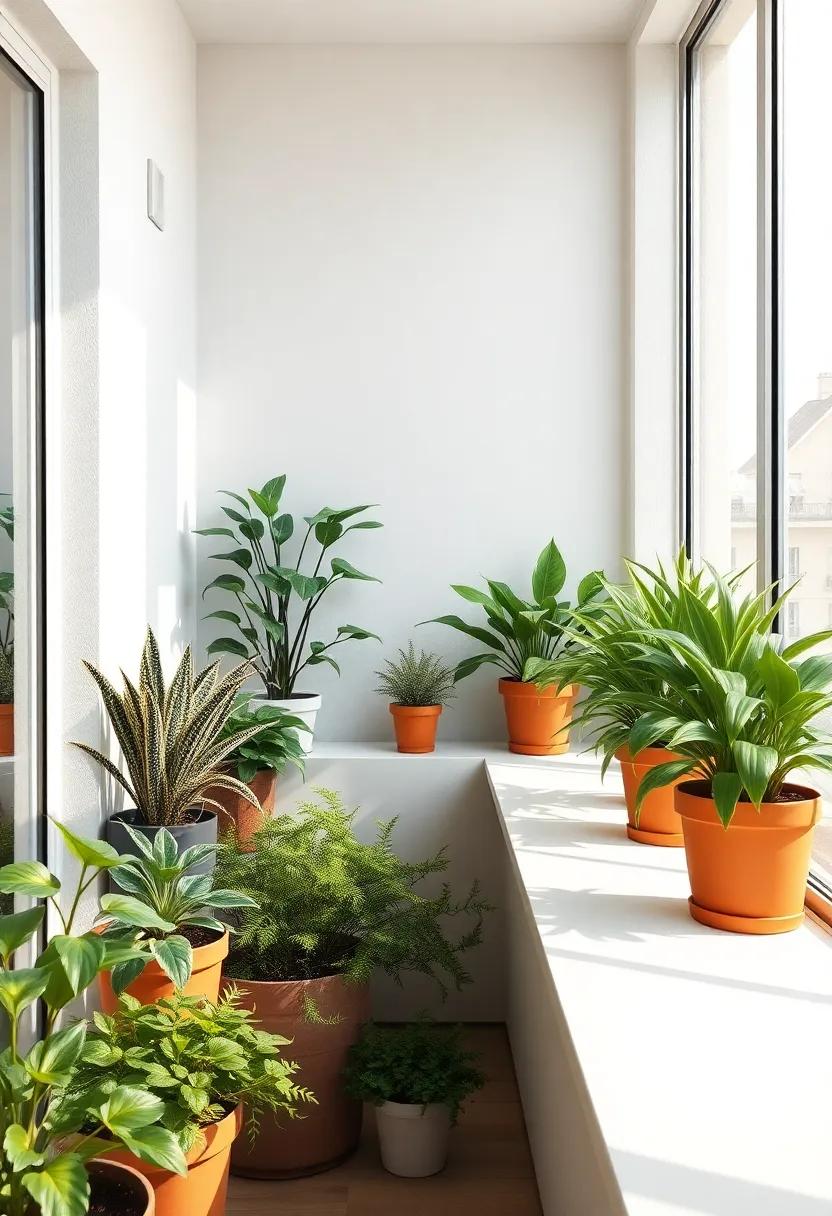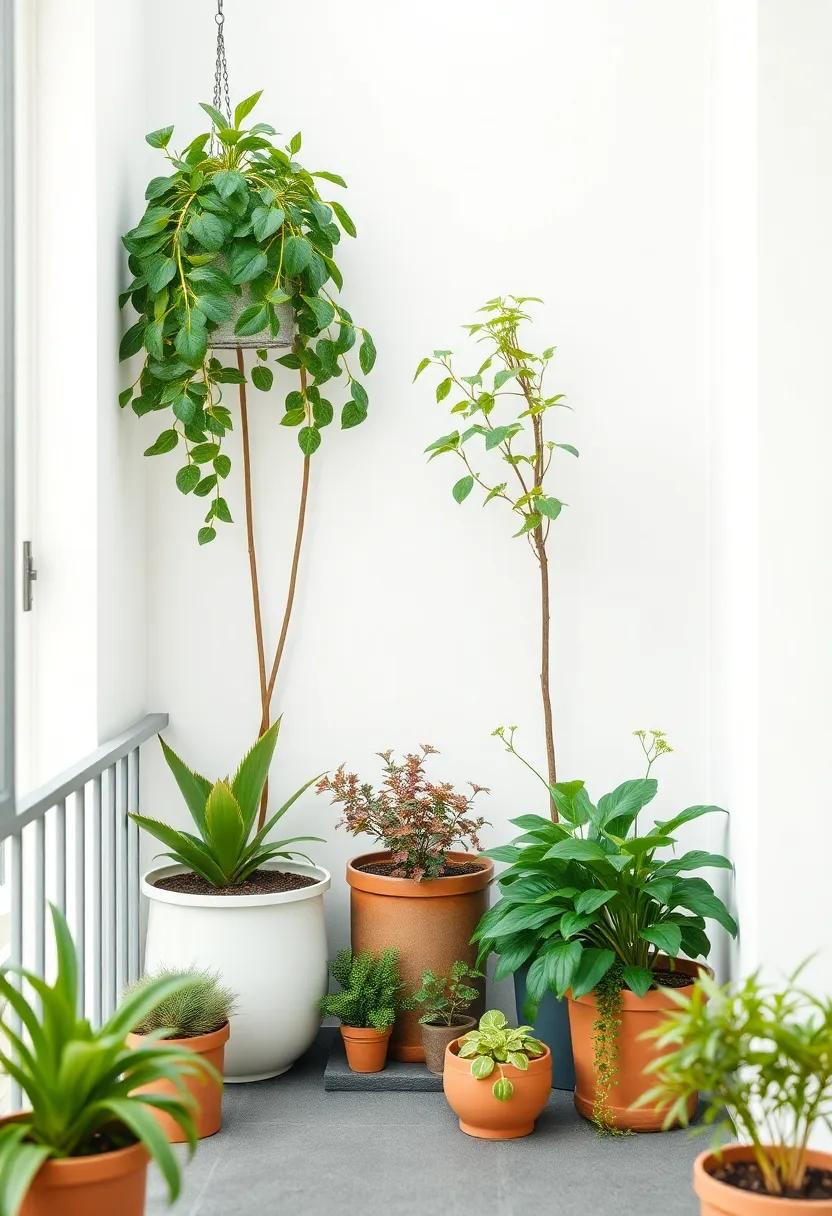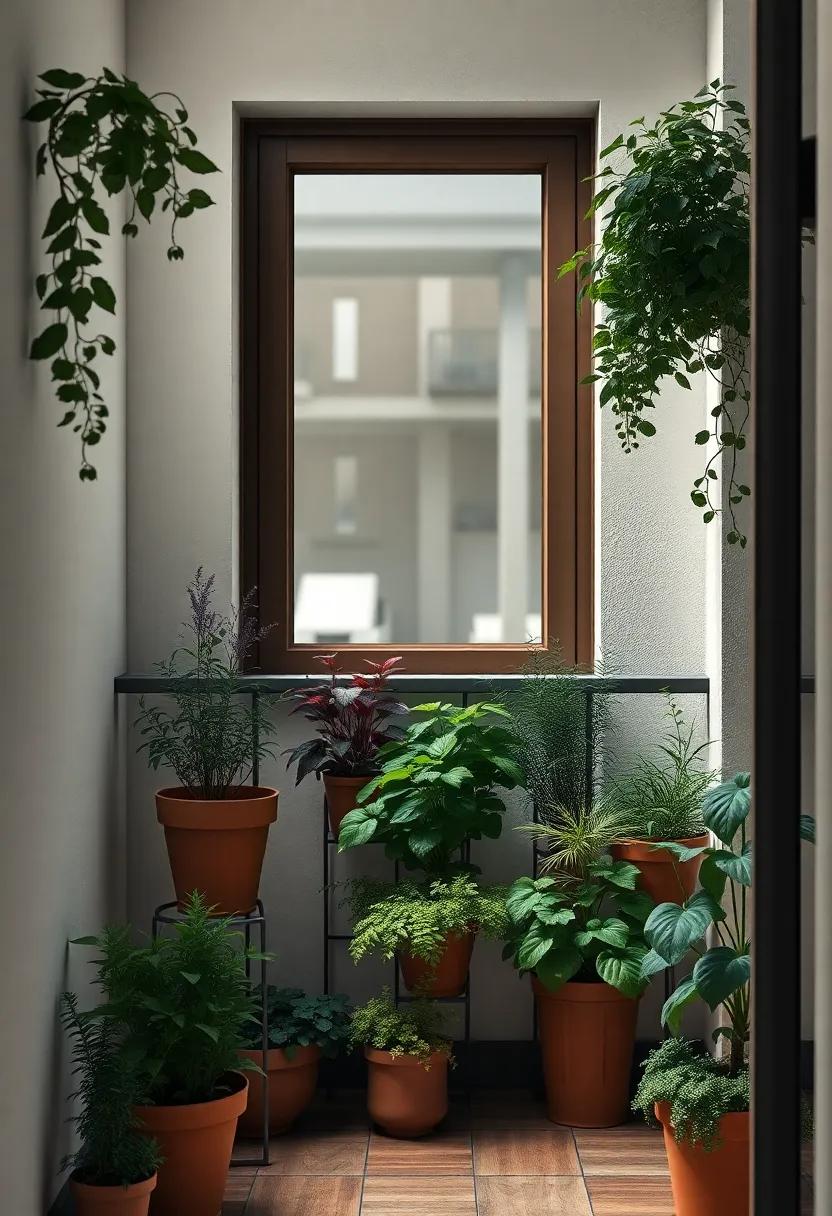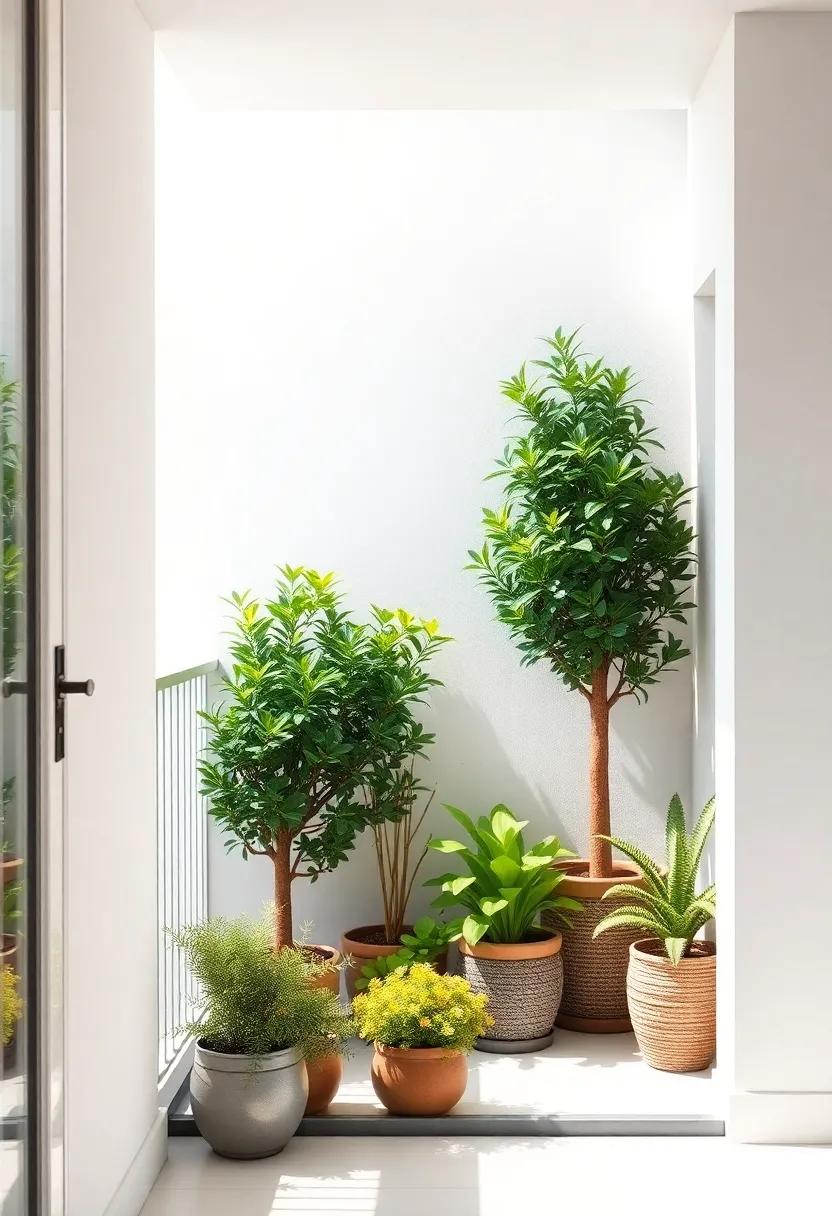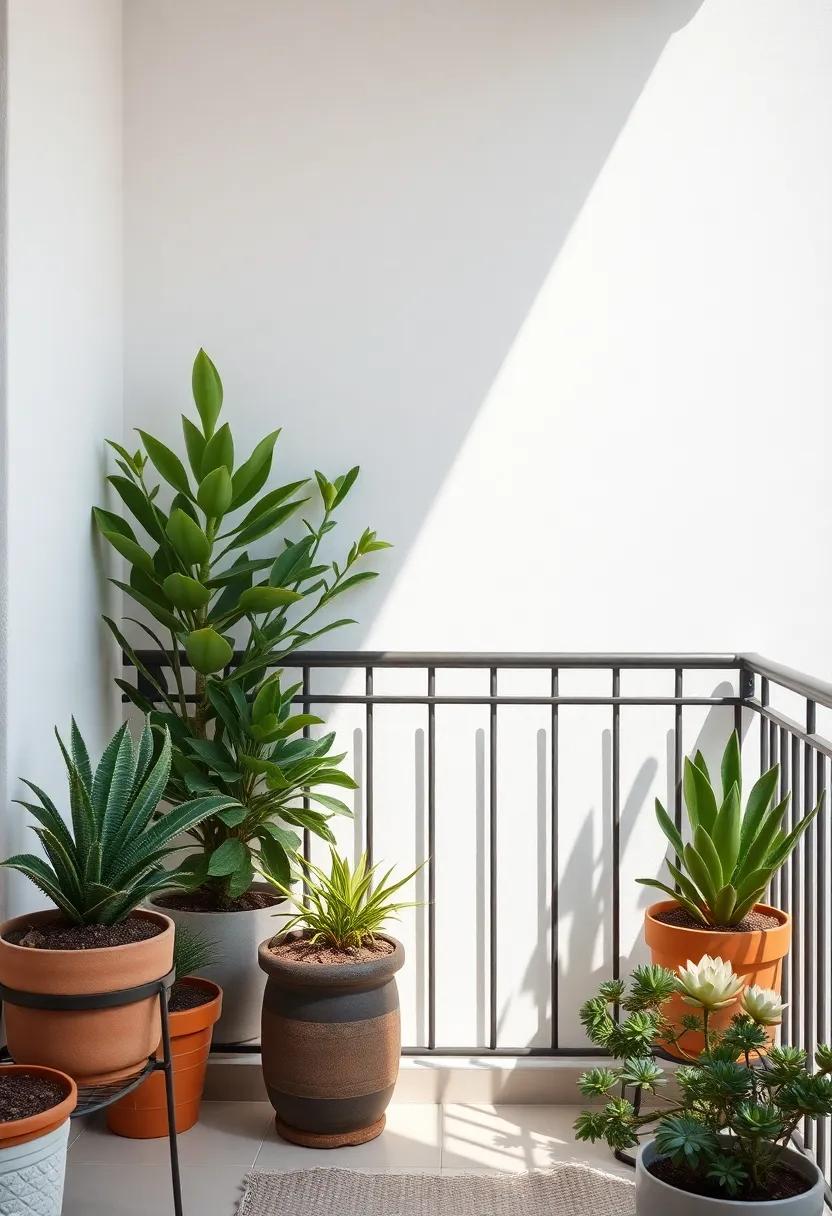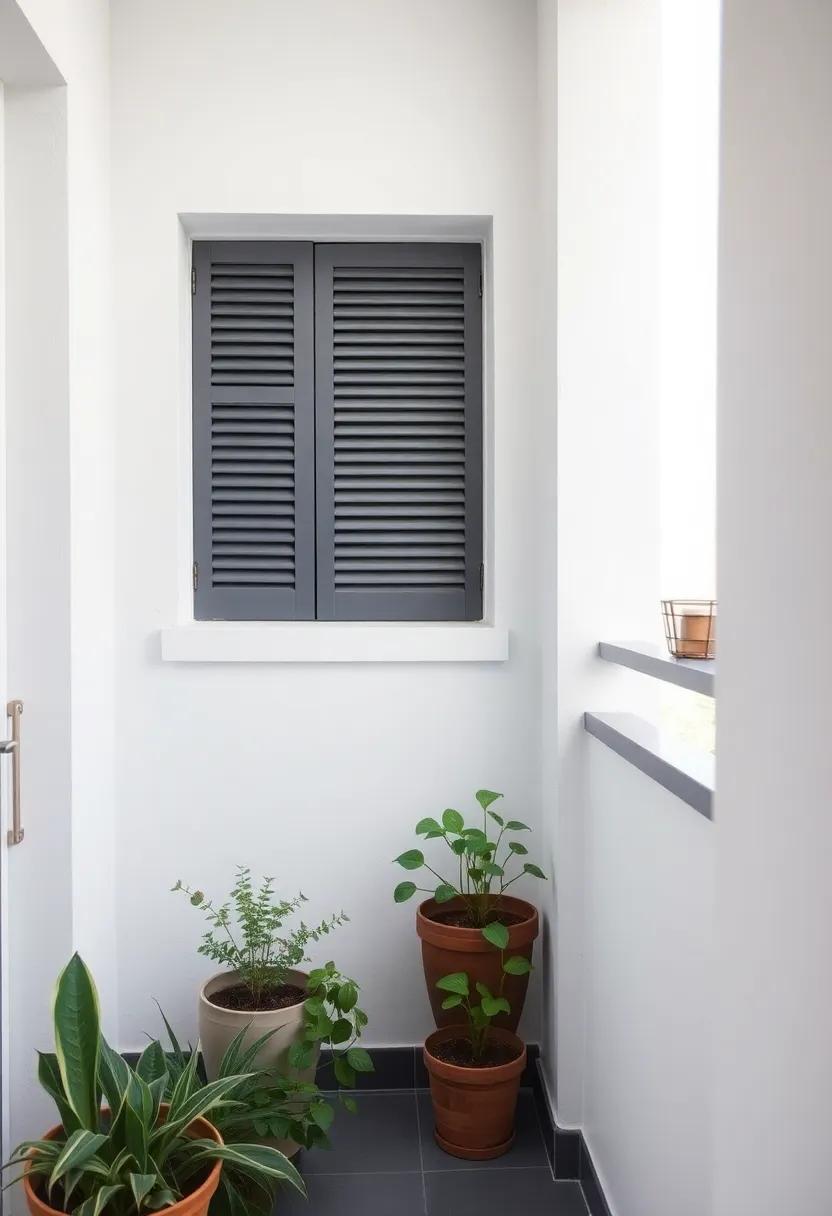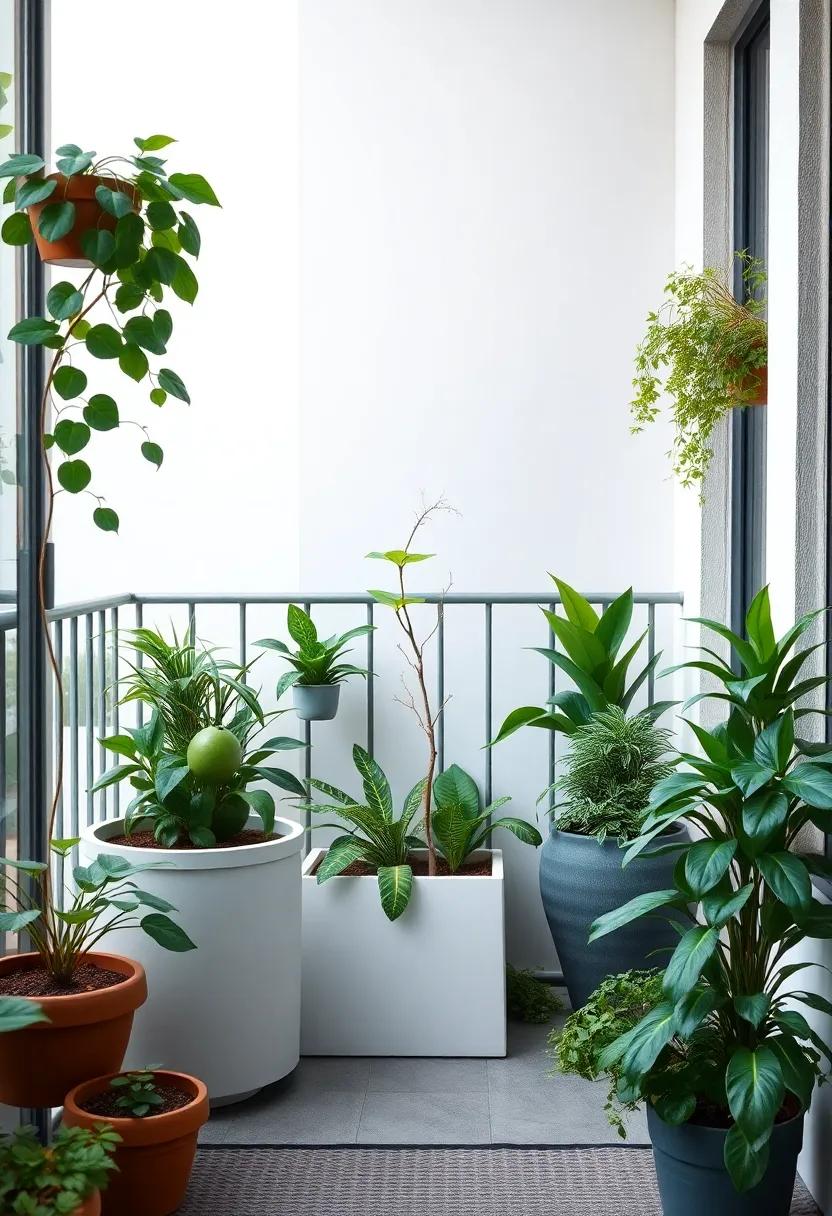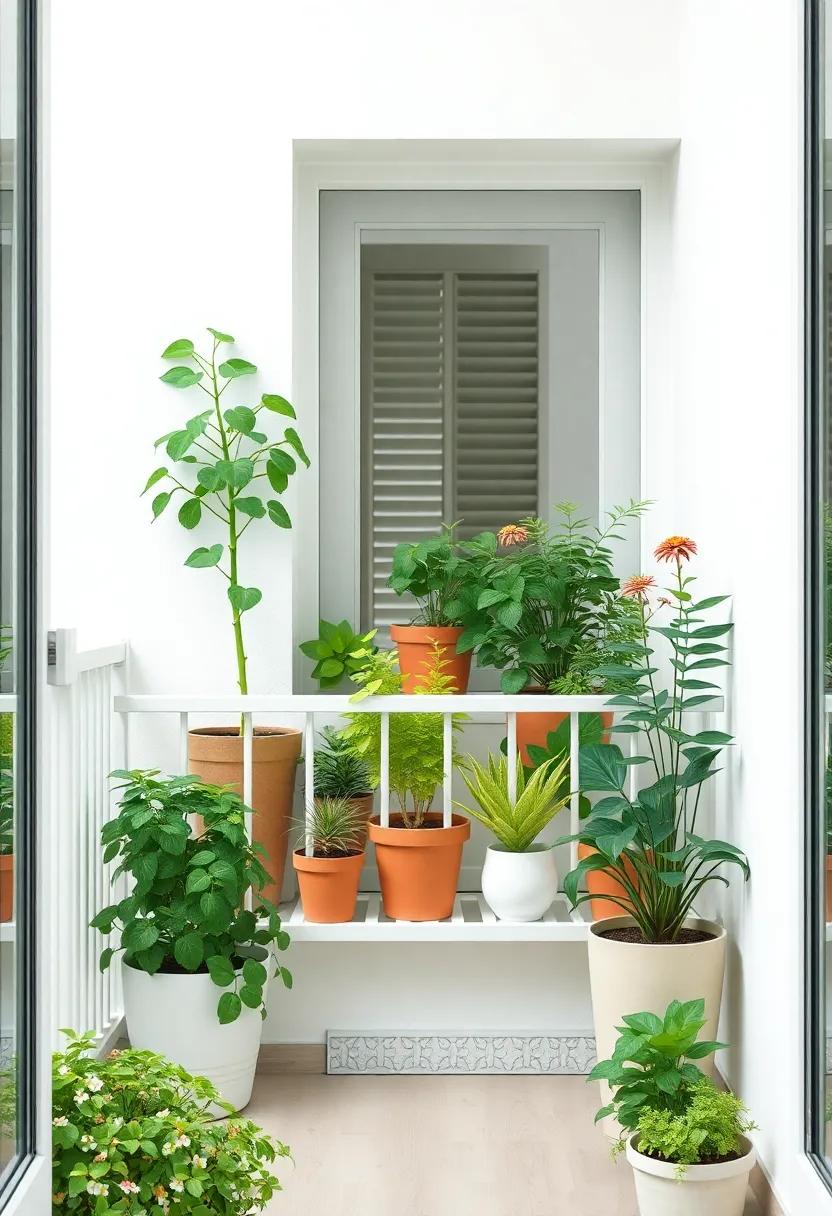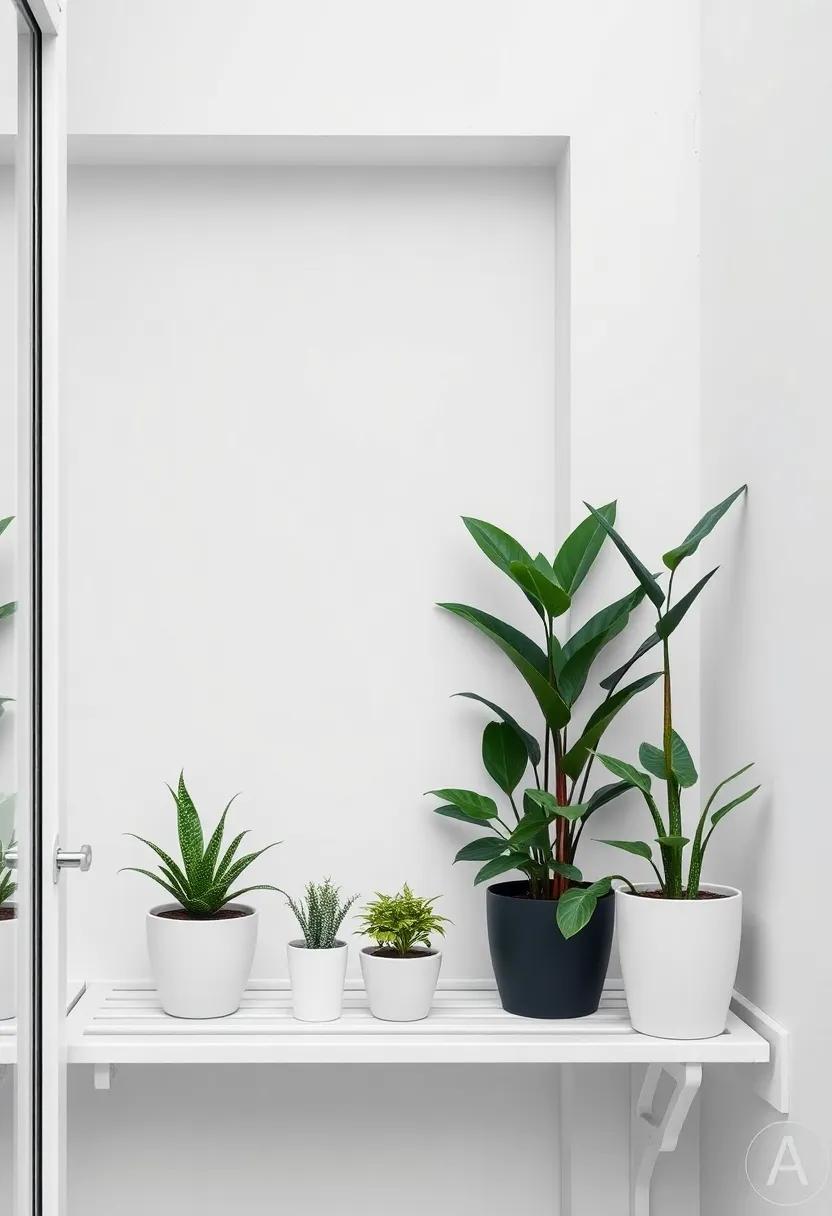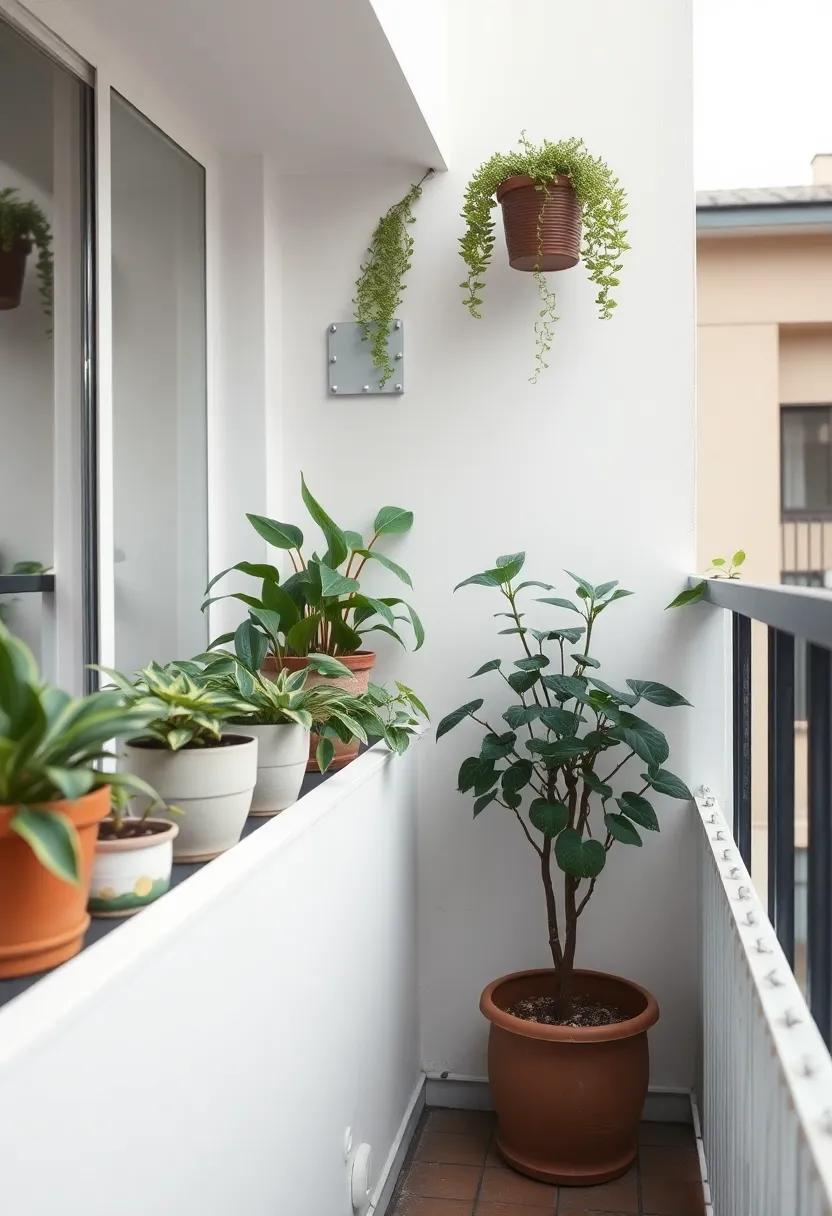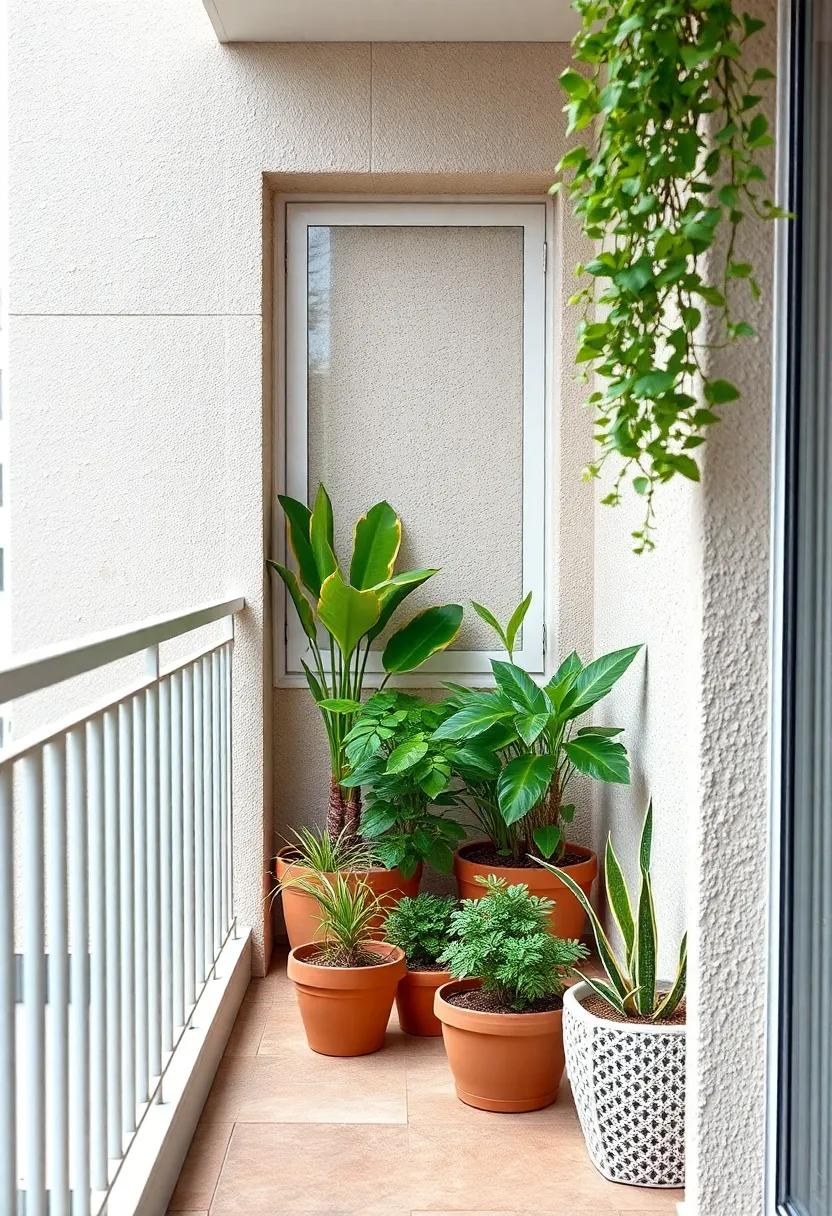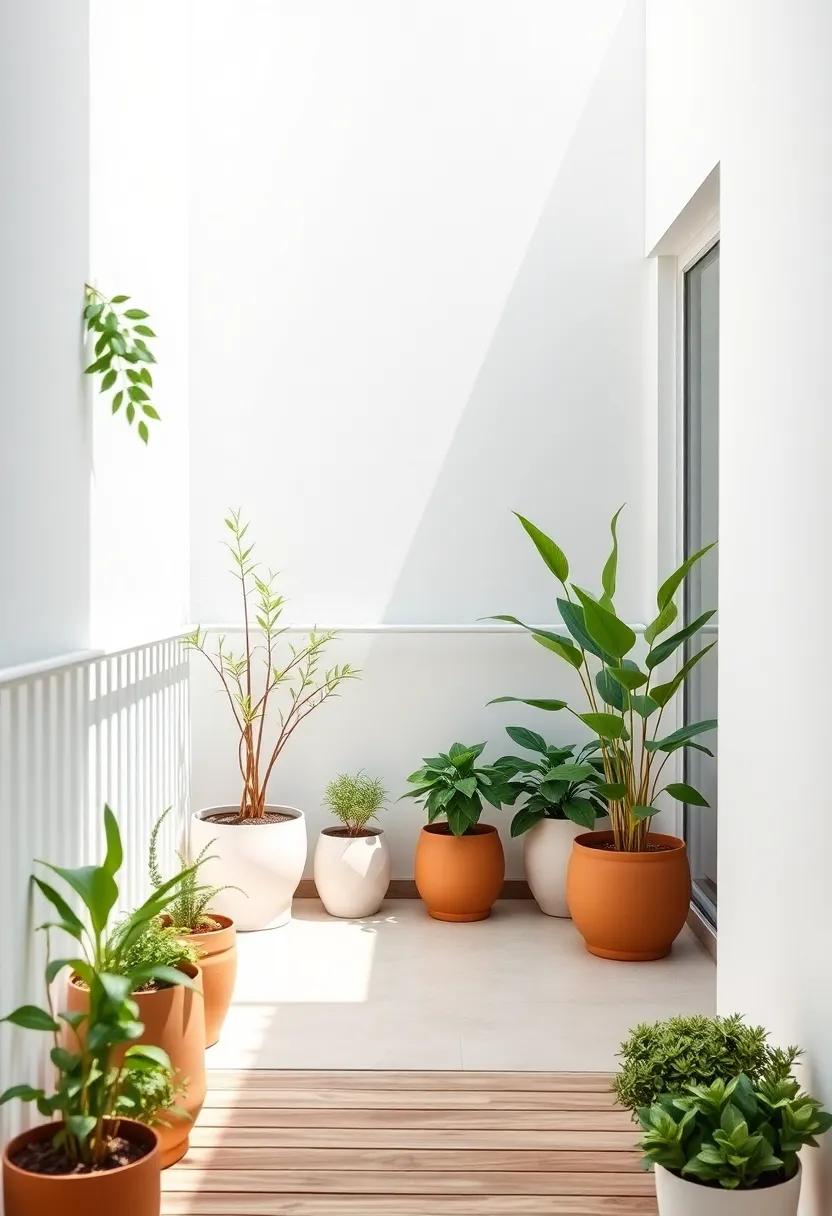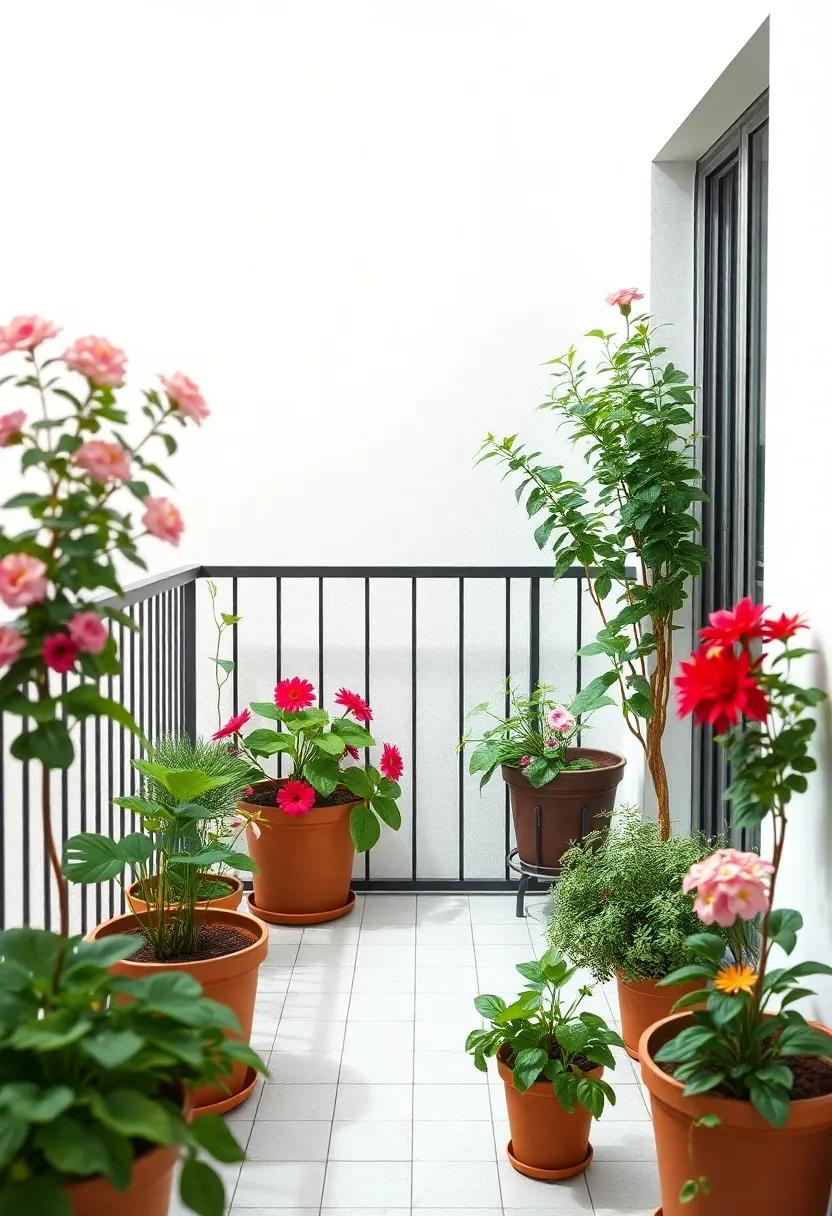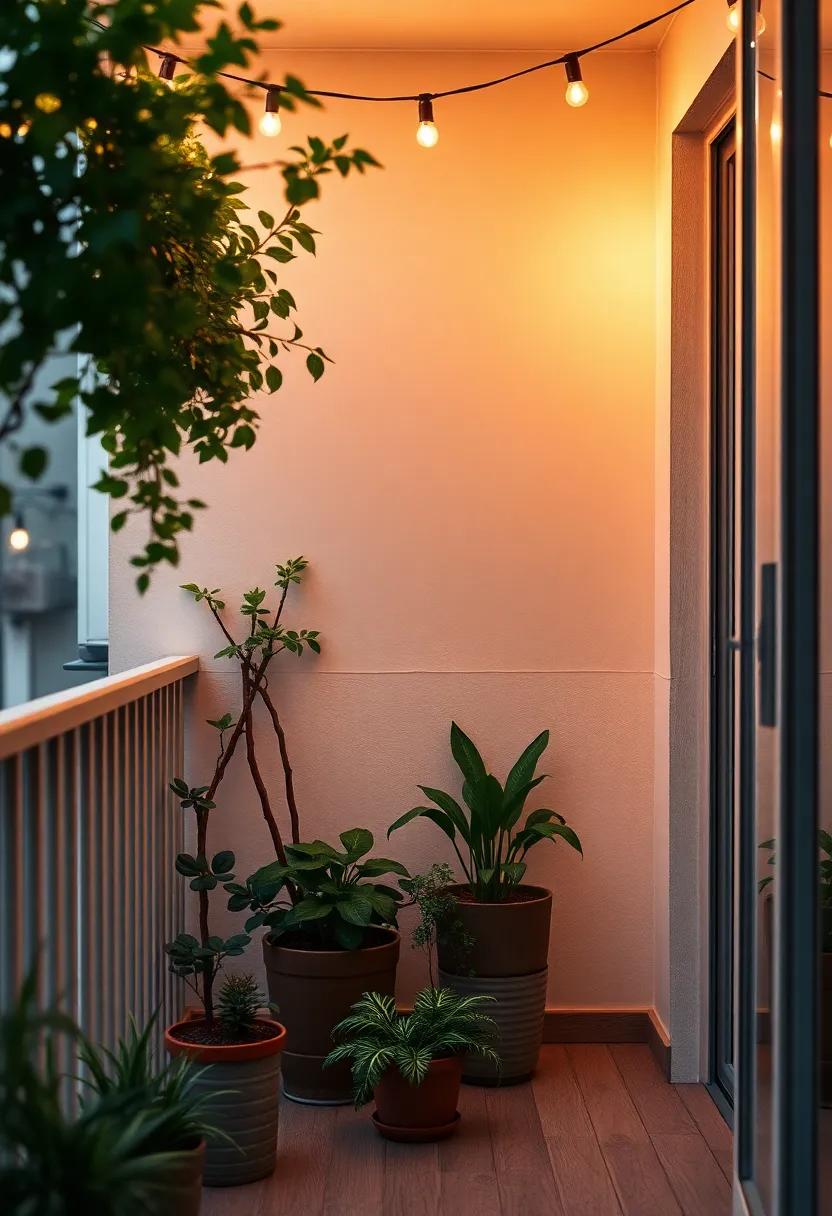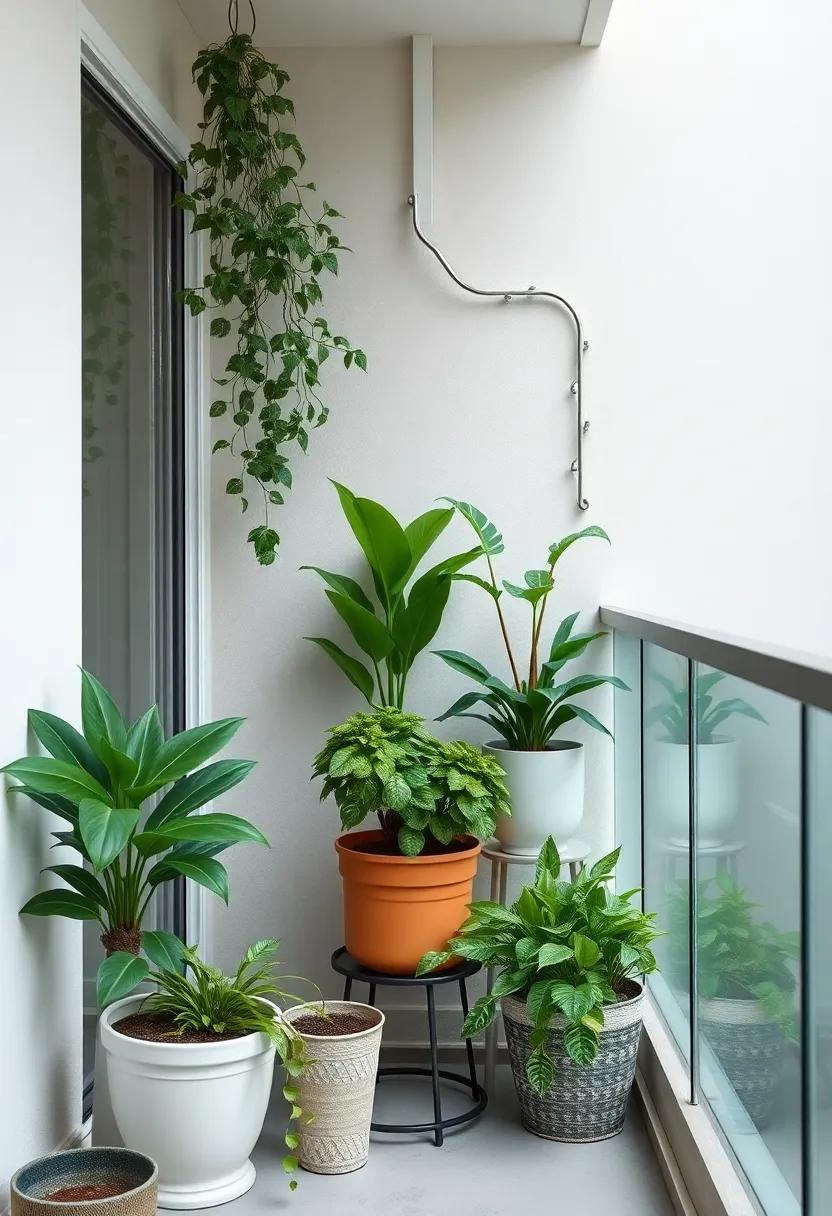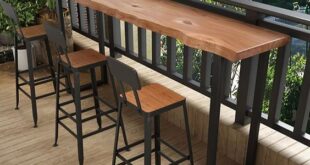In the heart of the urban jungle, where concrete towers rise and the hum of city life never ceases, lies an unexpected sanctuary: the space-in-your-yard-for-small-deck-ideas/” title=”Make most of the … in your yard for Small deck ideas”>small-spaces/” title=”… Your Tiny …: Creative Ideas for … …s”>tiny balcony. Often overlooked as mere extensions of cramped apartments, these small outdoor spaces hold the potential to become lush, green oases that breathe life into the everyday.With a touch of creativity and a love for nature, even the most modest balcony can be transformed into a verdant retreat, offering a slice of serenity amidst the chaos. This article explores how to harness the power of plants to turn compact balconies into thriving, green havens—proving that no space is too small to cultivate beauty and tranquility.
The Allure of a Miniature jungle on Your Balcony
Imagine stepping onto your balcony and being greeted by a lush, vibrant sanctuary that feels like a secret escape from the urban chaos. A miniature jungle, carefully curated with a mix of trailing vines, compact shrubs, and flowering plants, can transform even the tiniest balcony into a green oasis. Vertical gardening is your best ally here—think hanging planters, wall-mounted pots, and trellises that maximize space while adding depth and texture. Pair these with multi-tiered plant stands to create layers of greenery, giving the illusion of a dense, thriving ecosystem.
Choosing the right plants is key to achieving this verdant paradise. Opt for low-maintenance varieties that thrive in small spaces, such as:
- Pothos: Perfect for trailing down shelves or hanging baskets.
- Succulents: Compact and drought-tolerant, ideal for sunny spots.
- Ferns: Add a touch of tropical elegance with their delicate fronds.
- Herbs: Practical and aromatic, like basil or mint, for a functional green corner.
| Plant | Light Requirement | Watering Frequency |
|---|---|---|
| Pothos | Low to Medium | Weekly |
| Succulents | Bright, Direct | bi-weekly |
| Ferns | Indirect, Shade | 2-3 times a week |
| Herbs | Bright, Indirect | Every 2-3 days |
With a little creativity and thoughtful planning, your balcony can become a serene retreat that not only beautifies your home but also nurtures your well-being. The interplay of light, texture, and color will make this small space feel like a personal paradise, proving that even the tiniest corners can hold immense potential.
Choosing the Right Plants for a Compact Green retreat
Creating a lush, green retreat on a compact balcony begins with selecting the right plants. Opt for species that thrive in confined spaces and require minimal maintenance. Vertical climbers like ivy or jasmine can add height without consuming floor space, while compact shrubs such as boxwood or dwarf hydrangeas bring structure and texture.For a touch of color, consider flowering plants like petunias or geraniums, which bloom abundantly even in small pots. Herbs like basil, mint, and thyme are not only practical for cooking but also add a refreshing aroma to your tiny oasis.
When planning your balcony garden, think about the conditions your space offers. Is it sunny, shaded, or a mix of both? Here’s a fast guide to help you choose:
| Light Condition | Plant Suggestions |
|---|---|
| Full Sun | Succulents, Lavender, Rosemary |
| Partial Shade | Ferns, Begonias, Caladiums |
| Full Shade | Hostas, Peace Lilies, English Ivy |
Don’t forget to incorporate multi-functional planters—hanging baskets, wall-mounted pots, or tiered stands—to maximize every inch. By carefully curating your plant selection and arranging them thoughtfully, even the tiniest balcony can become a serene, green sanctuary.
Vertical Gardens: maximizing Space with Climbing Vines
When space is limited, vertical gardens offer a brilliant solution to bring greenery into your home. By utilizing climbing vines and wall-mounted planters, even the tiniest balcony can transform into a lush retreat. Plants like ivy, jasmine, and clematis are perfect for vertical growth, creating a living wall that not only looks stunning but also improves air quality. Pair these with trailing plants like pothos or philodendron to add layers of texture and depth to your green oasis.
To maximize your vertical garden, consider these tips:
- Choose the right plants: Opt for species that thrive in your climate and light conditions.
- use sturdy supports: Trellises, wire grids, or even repurposed ladders can provide structure for climbing vines.
- Layer your planters: Combine hanging pots with wall-mounted shelves to create a dynamic, multi-level display.
| Plant | Light Needs | growth Speed |
|---|---|---|
| Ivy | Partial Shade | Fast |
| Jasmine | Full Sun | Moderate |
| Clematis | Full Sun to Partial Shade | Fast |
The Magic of Hanging Planters in small Outdoor Spaces
When space is limited, hanging planters become a game-changer for creating a lush, green retreat. These versatile additions allow you to maximize vertical space, turning even the tiniest balcony into a vibrant sanctuary. Imagine cascading ivy, blooming petunias, or fragrant herbs suspended in mid-air, adding depth and texture to your outdoor area. Not only do they save precious floor space, but they also draw the eye upward, making the area feel larger and more dynamic.
Here are a few ways to make the most of hanging planters:
- Mix and match plant varieties for a layered, textured look.
- Use macramé hangers for a bohemian vibe or sleek metal hooks for a modern touch.
- experiment with trailing plants like pothos or string of pearls to create a waterfall effect.
| Planter Type | Best Plant Pairing | Style |
|---|---|---|
| Ceramic | Succulents | Minimalist |
| Rattan | Ferns | Bohemian |
| Metal | Herbs | Industrial |
Creating a Lush Canopy with Cascading Foliage
Transform your tiny balcony into a verdant retreat by layering plants to create a lush,cascading canopy. Start by selecting trailing varieties like pothos, ivy, or string of pearls that naturally spill over the edges of pots and hanging baskets. Pair these with taller,upright plants such as ficus or bird of paradise to add height and structure. the interplay of textures and heights will give your space depth and a sense of abundance, making it feel like a hidden jungle.
To maximize the effect, arrange your plants strategically.Use wall-mounted shelves or vertical planters to free up floor space while adding layers of greenery. Here’s a quick guide to pairing plants for a cohesive look:
| Plant Type | Best Pairing |
|---|---|
| Trailing Plants | Upright Plants |
| String of Pearls | Snake Plant |
| Ivy | Fiddle Leaf fig |
Don’t forget to incorporate a mix of foliage colors and shapes—variegated leaves, deep greens, and feathery fronds can create visual interest. With thoughtful placement and a bit of creativity, even the smallest balcony can become a green oasis.
Balcony Blooms: Adding Color with Flowering Plants
Transforming a small balcony into a vibrant green oasis is easier than you think. With the right selection of flowering plants, even the tiniest spaces can burst with color and life. Petunias, geraniums, and marigolds are excellent choices for adding a splash of color, as they thrive in containers and require minimal maintenance. Pair these with trailing plants like ivy or sweet potato vine to create a lush, cascading effect that maximizes vertical space. Don’t forget to incorporate fragrant blooms like lavender or jasmine to elevate the sensory experience of your balcony retreat.
When planning your balcony garden, consider the following tips to ensure your plants flourish:
- Choose the right containers: Opt for lightweight pots with proper drainage to prevent waterlogging.
- Group plants strategically: Place sun-loving plants together and shade-tolerant varieties in cooler spots.
- Use vertical space: Install wall planters or hanging baskets to free up floor space.
| Plant | sunlight Needs | Watering Frequency |
|---|---|---|
| Petunias | Full sun | Every 2-3 days |
| Geraniums | Partial to full sun | Weekly |
| Lavender | Full sun | Every 7-10 days |
The art of Layering Plants for Depth and Texture
Creating a lush, vibrant balcony garden is all about mastering the art of layering plants to achieve depth and texture.Start by selecting plants of varying heights,shapes,and foliage types. Tall, vertical plants like bamboo or snake plants can serve as a backdrop, while mid-height shrubs such as ferns or dwarf citrus trees add structure. Ground-level plants like creeping thyme or succulents fill in the gaps, creating a cohesive, multi-dimensional look. Don’t forget to incorporate trailing plants like ivy or pothos to cascade over edges,softening the hard lines of your balcony.
To enhance the visual appeal,consider grouping plants with contrasting textures and colors. For example:
- Feathery ferns paired with glossy-leaved plants like rubber trees.
- Spiky succulents alongside soft, velvety lamb’s ear.
- Variegated foliage mixed with solid green plants for a dynamic contrast.
Here’s a simple guide to help you layer effectively:
| Layer | Plant Examples | Purpose |
|---|---|---|
| Back | Bamboo, Snake Plant | Height and structure |
| Middle | Ferns, Dwarf Citrus | Filling space, adding texture |
| front | Creeping Thyme, Succulents | Ground cover, visual interest |
Incorporating Edible Greens into Your Balcony Oasis
transforming your balcony into a lush, edible haven is easier than you think.Start by selecting versatile greens that thrive in small spaces, such as lettuce, spinach, or kale.These leafy wonders not only add vibrant color but also provide fresh ingredients for your meals. Pair them with compact herbs like basil, parsley, or cilantro, which can grow in small pots or vertical planters. To maximize space, consider using hanging baskets or tiered shelves, ensuring every inch of your balcony is utilized efficiently.
For a structured approach, here’s a simple guide to pairing greens with their ideal growing conditions:
| Edible Green | Light Needs | Container Size |
|---|---|---|
| Lettuce | Partial Sun | Small to Medium |
| Spinach | Partial shade | Small |
| Basil | Full Sun | Small |
Incorporate companion planting to boost growth and deter pests naturally. For example, planting marigolds alongside your greens can help keep aphids at bay. Don’t forget to use self-watering pots or a drip irrigation system to maintain consistent moisture, especially during hot summer days. With a little creativity, your balcony can become a thriving green oasis that’s both beautiful and functional.
The Role of Light in Shaping Your Balcony Garden
Light is the lifeblood of any balcony garden, dictating not only what you can grow but also how your plants will thrive. whether your balcony is bathed in sunlight or tucked in the shade, understanding the role of light is key to creating a flourishing green space. Sun-loving plants like herbs, succulents, and flowering annuals crave at least six hours of direct sunlight, while shade-tolerant varieties such as ferns, hostas, and peace lilies thrive in filtered or indirect light.Positioning your plants strategically—placing taller plants to the north and shorter ones to the south—can maximize light exposure and prevent overshadowing.
To make the most of your balcony’s light conditions, consider these tips:
- Observe light patterns: Track how sunlight moves across your balcony throughout the day to identify the brightest and shadiest spots.
- Use reflective surfaces: Mirrors or light-colored walls can bounce light onto plants in darker corners.
- Rotate your pots: Regularly turning your containers ensures even growth and prevents plants from leaning toward the light.
| Light Condition | Recommended plants |
|---|---|
| Full Sun | Rosemary, Lavender, Geraniums |
| Partial Shade | Begonias, coleus, Impatiens |
| Full Shade | Ferns, Calatheas, English Ivy |
Selecting containers That Complement Your Green Vision
When curating your green oasis, the containers you choose play a pivotal role in enhancing both aesthetics and functionality. Opt for eco-kind materials like terracotta, recycled plastic, or biodegradable pots to align with your lasting vision. Consider the following tips to elevate your balcony garden:
- Size Matters: Match the container size to the plant’s root system to ensure healthy growth.
- Color Coordination: Use neutral tones or earthy hues to create a cohesive look.
- Drainage is Key: Ensure pots have proper drainage holes to prevent waterlogging.
- Vertical Solutions: Utilize hanging planters or wall-mounted containers to maximize space.
For a more structured approach, here’s a quick guide to pairing plants with the right containers:
| Plant Type | Recommended Container |
|---|---|
| Succulents | Shallow, wide pots |
| Herbs | Moderate-sized, breathable pots |
| Trailing Plants | Hanging baskets or tall, narrow pots |
By thoughtfully selecting containers, you not only support your plants’ needs but also craft a visually harmonious space that reflects your green vision.
The Tranquility of a Balcony Filled with Aromatic Herbs
Imagine stepping onto your balcony and being greeted by a symphony of scents—fresh basil, fragrant rosemary, and zesty mint. A small balcony, often overlooked, can become a sanctuary of calm and greenery with just a few carefully chosen plants. By incorporating aromatic herbs, you not only create a visually appealing space but also a functional one. These herbs are easy to grow,require minimal maintenance,and can transform even the tiniest balcony into a lush retreat.
Here are some herbs that thrive in small spaces and add both beauty and utility:
- basil: Perfect for adding a fresh touch to your meals and a vibrant green to your balcony.
- rosemary: A hardy herb that doubles as a natural air freshener.
- Mint: Grows quickly and can be used in teas, cocktails, or desserts.
- Thyme: A low-maintenance herb that adds a delicate texture to your green space.
| Herb | Light Needs | Watering Frequency |
|---|---|---|
| Basil | Full sun | Daily |
| Rosemary | Partial to full sun | Every 2-3 days |
| Mint | Partial shade | Daily |
| Thyme | Full sun | Every 3-4 days |
Pairing these herbs with compact planters or vertical gardens maximizes space while creating a layered, textured look. The result? A balcony that feels like a private oasis, where you can unwind, breathe deeply, and reconnect with nature—no matter how small your outdoor area might potentially be.
Designing a Cozy Nook with Potted Trees and Shrubs
Creating a cozy nook on a tiny balcony is all about maximizing space while maintaining a sense of tranquility. Potted trees and shrubs are perfect for this purpose, as they add height, texture, and a touch of nature to even the smallest areas. Start by selecting compact varieties like dwarf citrus trees, boxwood shrubs, or Japanese maples. These plants thrive in containers and won’t overwhelm your space. Arrange them in layered groupings—place taller plants at the back and smaller ones in front to create depth. Add a small bench or a couple of cushions, and you’ve got a serene retreat right outside your door.
To enhance the ambiance, consider incorporating multi-functional planters that double as seating or storage. For example, a wooden planter box with a built-in bench can serve as both a home for your greenery and a cozy spot to relax. Below is a simple guide to help you choose the right plants for your balcony nook:
| Plant | Light Requirement | Maintenance Level |
|---|---|---|
| Dwarf Lemon Tree | Full Sun | Moderate |
| Boxwood Shrub | Partial Shade | Low |
| Japanese Maple | Partial Sun | Moderate |
- Use vertical space: Hang trailing plants like ivy or ferns to add greenery without taking up floor space.
- Incorporate texture: Mix plants with different leaf shapes and sizes for visual interest.
- Add lighting: String lights or solar-powered lanterns can make your nook inviting even after sunset.
The Charm of Succulents in a Compact Balcony Setting
Succulents are the unsung heroes of small-space gardening, offering a perfect blend of beauty and practicality. Their compact size and low-maintenance nature make them ideal for transforming even the tiniest balcony into a lush retreat.With their unique shapes,textures,and colors,succulents create a visually captivating display that feels both modern and timeless. Whether arranged in hanging planters, vertical gardens, or miniature terrariums, these hardy plants thrive in limited spaces, proving that you don’t need a sprawling garden to enjoy the serenity of greenery.
To maximize , consider these creative ideas:
- Mix and match varieties: Combine different types of succulents, such as Echeveria, Haworthia, and Sedum, to create a dynamic and textured arrangement.
- Use multi-tiered shelves: Optimize vertical space by displaying succulents on shelves or ladder-style plant stands.
- Incorporate decorative pots: Choose pots in complementary colors or patterns to add a touch of personality to your green oasis.
| Succulent Type | Light Needs | Watering Frequency |
|---|---|---|
| Echeveria | Bright, indirect light | Every 2-3 weeks |
| Haworthia | Partial shade | Every 3-4 weeks |
| Sedum | Full sun | Every 2 weeks |
Balancing Aesthetics and Functionality in Small Spaces
Creating a green oasis on a tiny balcony is all about maximizing every inch of space while ensuring the area remains both beautiful and practical. Start by selecting plants that thrive in compact environments, such as succulents, herbs, or trailing vines. Vertical gardening is a game-changer—use wall-mounted planters, hanging baskets, or trellises to add layers of greenery without cluttering the floor. Pair these with multi-functional furniture, like a foldable bistro set or a bench with built-in storage, to maintain a balance between aesthetics and functionality.
When designing your balcony,consider the interplay of light,texture,and color. Opt for light-colored pots to reflect sunlight and make the space feel larger, or mix and match textures like terracotta, ceramic, and woven baskets for visual interest. Below is a simple guide to help you choose the right plants for different light conditions:
| Light Condition | Recommended Plants |
|---|---|
| Full Sun | Lavender, Rosemary, Geraniums |
| Partial Shade | Ferns, Begonias, Pothos |
| Low Light | Snake Plant, ZZ Plant, Peace Lily |
Incorporate small decorative elements like fairy lights, a water feature, or a cozy throw pillow to add personality without overwhelming the space. Remember, the key to a successful small balcony design is to keep it simple, intentional, and harmonious.
The Joy of Seasonal Changes in a Balcony Garden
There’s something magical about watching your balcony garden transform with the seasons. In spring, the air is filled with the delicate fragrance of blooming flowers like jasmine and petunias, while summer brings a lush canopy of greenery, perfect for creating a shaded retreat. As autumn arrives, the foliage turns into a vibrant palette of reds, oranges, and yellows, offering a cozy ambiance.Even winter has its charm, with hardy plants like evergreens and ornamental kale adding structure and life to your tiny outdoor space.
To make the most of seasonal changes, consider these tips:
- Rotate plants to match the season—spring bulbs, summer herbs, and winter succulents.
- Use seasonal decor like fairy lights in winter or colorful pots in summer.
- Experiment with vertical gardening to maximize space and create a dynamic display.
| Season | Recommended Plants |
|---|---|
| Spring | Tulips, daffodils, Pansies |
| Summer | Tomatoes, Basil, Geraniums |
| Autumn | Chrysanthemums, Ornamental Grasses |
| Winter | Evergreens, Cyclamen, Kale |
Creating a Wildlife Haven with Pollinator-Friendly Plants
Transforming a tiny balcony into a thriving green oasis is easier than you think, especially when you focus on pollinator-friendly plants.These plants not only add beauty and life to your space but also support bees, butterflies, and other essential pollinators. Start by selecting a mix of native flowers, herbs, and shrubs that bloom at different times of the year to ensure a continuous food source. Lavender, sunflowers, and marigolds are excellent choices for attracting pollinators, while herbs like thyme, rosemary, and basil double as culinary delights. Even in a small area, vertical gardening with trellises or hanging planters can maximize space and create a lush, layered look.
To make your balcony even more inviting, consider adding a few simple elements that enhance the habitat for wildlife. A shallow dish of water with pebbles provides a safe drinking spot for bees and butterflies, while a small bird feeder or nesting box can attract feathered visitors. Here’s a quick guide to some pollinator-friendly plants and their benefits:
| Plant | Pollinators Attracted | Bloom Season |
|---|---|---|
| Lavender | Bees, Butterflies | Summer |
| Sunflowers | Bees, Birds | Late Summer |
| Marigolds | Butterflies, Hoverflies | Spring to Fall |
By thoughtfully selecting plants and adding small touches, your balcony can become a vibrant sanctuary for both you and local wildlife. Even the tiniest spaces can make a big impact on the environment when designed with care and intention.
The Elegance of Monochromatic Plant Arrangements
Monochromatic plant arrangements bring a sense of calm and sophistication to even the tiniest of spaces. by focusing on a single color palette—such as varying shades of green—you can create a cohesive and visually appealing oasis. Imagine a balcony adorned with lush ferns, trailing pothos, and compact succulents, all harmonizing in their verdant tones. This approach not only simplifies design decisions but also amplifies the natural beauty of each plant, making the space feel intentional and serene.
To achieve this look, consider the following elements:
- Texture Variety: Combine plants with different leaf shapes and surfaces, such as glossy rubber plants and feathery maidenhair ferns.
- Height Layers: Use plant stands or hanging pots to create depth and dimension.
- Minimalist Containers: Opt for pots in neutral tones like white, gray, or terracotta to keep the focus on the greenery.
| Plant | light Requirement | Care Level |
|---|---|---|
| Snake Plant | Low to Bright | easy |
| ZZ Plant | Low to Medium | Easy |
| Pothos | Medium to Bright | moderate |
The Practicality of Self-Watering Systems for Busy Lives
In today’s fast-paced world, maintaining a lush green space can feel like a luxury, especially when time is scarce. Self-watering systems are a game-changer for busy plant enthusiasts, offering a seamless way to keep your balcony garden thriving without constant attention. These systems work by storing water in a reservoir, allowing plants to absorb moisture as needed. This not only reduces the frequency of watering but also minimizes the risk of overwatering or underwatering, ensuring your plants stay healthy even when life gets hectic.
Here are some key benefits of incorporating self-watering systems into your tiny balcony oasis:
- Time-Saving: Perfect for those with packed schedules, as they require minimal maintenance.
- Water efficiency: Reduces water waste by delivering moisture directly to the roots.
- Consistent Care: Ensures plants receive a steady supply of water, even during vacations or busy weeks.
| Feature | Benefit |
|---|---|
| reservoir System | Provides a steady water supply for up to 2 weeks. |
| Modular Design | Fits perfectly in small spaces like balconies. |
| Eco-Friendly | Reduces water waste and promotes sustainability. |
The Beauty of Mixing Textures in a Balcony Garden
Creating a lush balcony garden is all about embracing the art of layering and blending textures. Imagine the soft,feathery fronds of ferns brushing against the sturdy,glossy leaves of a rubber plant. pairing these with the delicate tendrils of ivy or the spiky elegance of succulents adds depth and visual interest to even the smallest spaces. The key is to combine contrasting elements—smooth with rough,fine with coarse—to craft a dynamic and inviting green retreat.
To achieve this, consider the following combinations:
- Soft and Silky: Lamb’s ear or ornamental grasses for a touch of whimsy.
- Bold and Structured: Snake plants or ZZ plants for a modern,architectural feel.
- Delicate and Airy: String of pearls or baby’s tears for a cascading effect.
| Texture | Plant Example | Effect |
|---|---|---|
| Soft | Ferns | Adds a calming, natural vibe |
| Glossy | Rubber Plant | Reflects light, creating brightness |
| Spiky | Aloe Vera | Introduces a bold, sculptural element |
The Serenity of a Zen-Inspired Balcony with Minimalist Plants
Imagine stepping onto a balcony where every element whispers tranquility. A zen-inspired space, no matter how small, can become a sanctuary of calm with the right touch of minimalist greenery.Foliage with clean lines, such as snake plants or ZZ plants, creates a sense of order, while a single bonsai tree adds a touch of artistry. The key lies in simplicity—opt for a monochromatic palette of pots, like muted terracotta or sleek black, to maintain visual harmony. A small water feature, like a tabletop fountain, can amplify the soothing ambiance, turning your balcony into a retreat from the chaos of daily life.
To maximize the serenity of your space,consider the arrangement of your plants. Grouping plants in odd numbers (three or five) creates a balanced yet dynamic look. Below is a simple guide to help you curate your Zen-inspired balcony:
| Plant | Light requirement | Care Level |
|---|---|---|
| Snake Plant | Low to Medium | Easy |
| ZZ plant | Low | Easy |
| Bonsai Tree | Bright, Indirect | Moderate |
- Declutter: Keep only what serves a purpose or brings joy.
- Texture: Mix smooth and rough textures for visual interest.
- Lighting: Use soft, warm lights for evening ambiance.
The Delight of Growing Fragrant Flowers in Tight Spaces
Transforming a compact balcony into a lush, fragrant retreat is easier than you might think. With the right selection of plants, even the tiniest spaces can become a sensory haven. Fragrant flowers like jasmine, lavender, and gardenias are perfect for small areas, offering not only beauty but also a delightful aroma that can turn your balcony into a green oasis. Vertical gardening techniques, such as trellises or hanging planters, maximize space while adding depth and texture to your setup. Pair these with compact herbs like rosemary or mint, and you’ll have a multi-sensory experience that’s both visually stunning and aromatic.
When planning your balcony garden, consider the following essentials to ensure your plants thrive:
- Light Requirements: Choose plants that match your balcony’s sunlight exposure.
- Container Size: Opt for pots that allow root growth without overcrowding.
- Drainage: Ensure proper drainage to prevent waterlogging and root rot.
- Seasonal Care: Rotate plants or bring sensitive species indoors during harsh weather.
| Plant | Fragrance Level | Space Needed |
|---|---|---|
| Jasmine | High | Small |
| Lavender | Medium | Compact |
| Gardenia | High | moderate |
The Warmth of a balcony Garden Illuminated by String Lights
There’s something magical about stepping onto a balcony transformed into a lush, green sanctuary. The soft glow of string lights dances across the leaves,casting delicate shadows that bring the space to life. Whether it’s a collection of succulents in terracotta pots or a vertical garden bursting with herbs, every corner feels alive. The gentle hum of the city fades into the background, replaced by the rustle of leaves and the occasional chirp of a curious bird.It’s a reminder that even the smallest spaces can hold immense beauty and tranquility.
To create this enchanting atmosphere, consider these key elements:
- Layered Lighting: Combine string lights with solar-powered lanterns for a warm, inviting glow.
- Vertical Planting: Use wall-mounted planters or hanging baskets to maximize space.
- Textured Greens: Mix foliage with varying shapes and sizes for visual interest.
- Cozy Seating: Add a small bench or floor cushions to enjoy your green haven.
| Plant Type | Light Requirement | Care Level |
|---|---|---|
| Pothos | Low to Medium | Easy |
| herbs (Basil, Mint) | full Sun | Moderate |
| ferns | Shade | Moderate |
The Wonder of a Tiny Balcony Transformed into a Green Escape
Imagine stepping onto a balcony no larger than a closet, only to be greeted by a lush, vibrant sanctuary. With a little creativity and the right selection of plants, even the tiniest outdoor space can become a green oasis. Vertical gardens, hanging planters, and compact pots are the secret weapons of small-space gardening. Climbing vines like ivy or jasmine can transform bare walls into living tapestries, while succulents and herbs thrive in small containers, adding both beauty and functionality. The key is to layer textures and heights, creating depth and interest in a limited area.
To maximize your balcony’s potential, consider these essentials:
- Lightweight planters: Opt for materials like resin or fabric to avoid overloading the space.
- Multi-purpose furniture: Choose benches or stools with built-in storage for plants or gardening tools.
- Drought-resistant plants: Perfect for busy urban dwellers, these require minimal care and thrive in small spaces.
| Plant Type | Benefits |
|---|---|
| Ferns | Add lush greenery and thrive in shaded areas. |
| Herbs (basil,Mint) | Provide fresh flavors for cooking and grow well in small pots. |
| Pothos | Low-maintenance and perfect for hanging planters. |
Closing Remarks
As the sun dips below the horizon, casting a golden glow over your tiny balcony, it’s hard not to feel a sense of pride. What was once a forgotten corner has blossomed into a lush, green sanctuary—a testament to the magic of nature and the power of small, intentional choices. Whether it’s the gentle rustle of leaves in the breeze or the vibrant pop of color from a blooming flower, this little oasis is a reminder that even the smallest spaces can hold immense beauty and potential. So,as you sip your morning coffee or unwind with an evening book,surrounded by your thriving green companions,take a moment to appreciate the quiet joy of transforming a humble balcony into a living,breathing retreat. After all, in a world that frequently enough feels vast and overwhelming, there’s something profoundly grounding about nurturing a tiny piece of it—one plant at a time.
 decorifusta Garden and patio decoration inspiration
decorifusta Garden and patio decoration inspiration
